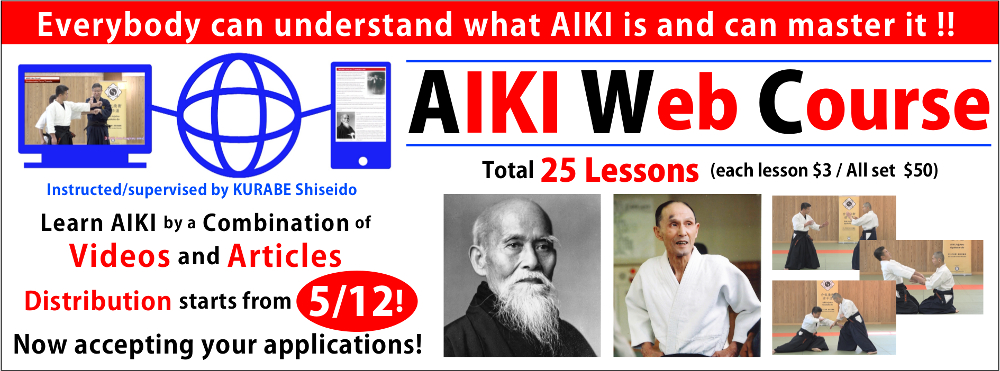“Awareness” Most important and remarkable result attained through BUJUTSU training

What“Awareness” means ?
You can often watch such scene in Samurai movies or TV dramas that a hero can detect attacker’s presence in his behind and does counter attack right before he is attacked. It might be so hard to understand this concept for Western people that a well-established Samurai could detect the presence of attacker who hides behind him even he does not see nor hear the attacker at all. It is too hard to realize that one could detect the other’s mind which is still not realized as an act. Westerners simply believe that it should be a fairy tale and could happen only in stories.
For Japanese, we take it as normal. For highly skilled Samurai, they can detect attacker’s mind quit naturally so most or even all of Japanese simply believe it is real. BBut how it happens ? Do all Japanese know it from own experience? Or is it a nation wide illusion which has been build up for hundreds years?
I would like to mention one Japanese Budo master, named Master Akira HINO, a Japanese Bujutsu-ka whose name is well known not only in Japan but in world wide. Once I saw a video where he shows a performance to avoid rifle’s bullet by quickly waving/turning him aside before the trigger is on. Of course the real bullet was not loaded in that rifle, but by observing Master HINO’s movement and the timing of triggering sound, we could judge if he could have escaped or not.
It was really amazing that every time Master HINO could move his body fully aside from the bullet path at the moment trigger was made. Of course the speed of a finger which makes trigger is much quicker than Master HINO’s body movement. He surely should have detected or felt the attacker’s triggering intention. This is only one logical explanation how and why it was possible. Master HINO should have mastered this Awareness through his long and deep Bujutsu training. He must be able to detect the attacker’s intention by gazing attacker’s eyes, or delicate change which appears all through attacker’s entire body.

 Japanese BUDO master,Akira Hino
Japanese BUDO master,Akira Hino
Even for Western people, this performance might be understood somehow, although it is still very much mysterious. But they surely still cannot accept the concept that well established Samurai could detect an attacker’s intention who hides behind and not visible from that Samurai at all. This could be possible if the Samurai can pay a sharp attention not only forwards but all around him like a sonar of submarine. And this is nothing else but one of Awareness in Bujutsu.
The other Awareness is “noticing” It means a well-established Samurai could notice a serious matter from a tiny evidence on which people could normally never pay attention. The target of this Awareness does not be restricted to the other’s attacking intention but every important intentions or happenings.
Well, let’s explain those two Awareness by referring to examples described in popular Samurai stories.
Awareness described in famous Samurai story “MIYAMOTO Musashi”

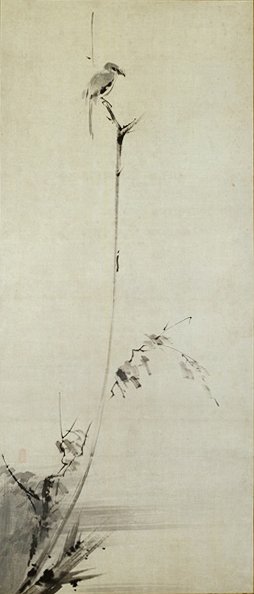 If I could point out the best story described Samurai’s way of living, it should be “MIYAMOTO Musashi” written by the most famous history story writer, Mr. Eiji YOSHIKAWA.
If I could point out the best story described Samurai’s way of living, it should be “MIYAMOTO Musashi” written by the most famous history story writer, Mr. Eiji YOSHIKAWA.
This story has been read and loved by a lot of Japanese for over half century. A hero of this book, a Samurai named MIYAMOTO Musashi, really existed during 16-17th centuries, when Japan was divided into many small countries which continued wars against each other till beginning of Tokugawa Shogun époque when Japan was united by the final winner of the wars, i.e. Mr. TOKUGWA Ieyasu. Thanks to this book, name of MIYAMOTO Musashi has become so popular that it is well known all over Japan now.
Musashi MIYAMOTO in his old days drawn by Musashi. He left several famous pictures and carvings
http://upload.wikimedia.org/wikipedia/commons/7/7c/P03jigazou.jpg http://upload.wikimedia.org/wikipedia/commons/0/00/Kobokumeigekizu.jpg
Like Master OYAMA Masutatsu, the founder of KYOKUSHIN Karate school, thousands of Japanese had kept the way of Musashi’s life with full of challenging spirits through battle field and death matches as their spiritual support during their own hard time. If any Western people intend to know and understand the Samurai spirits, it is strongly recommended to read this book as the first thing to do. It is not my purpose to explain how interesting this book is, but to explain Awareness itself by quoting several episodes from this book as good examples. These episode can exactly tell what Awareness is.
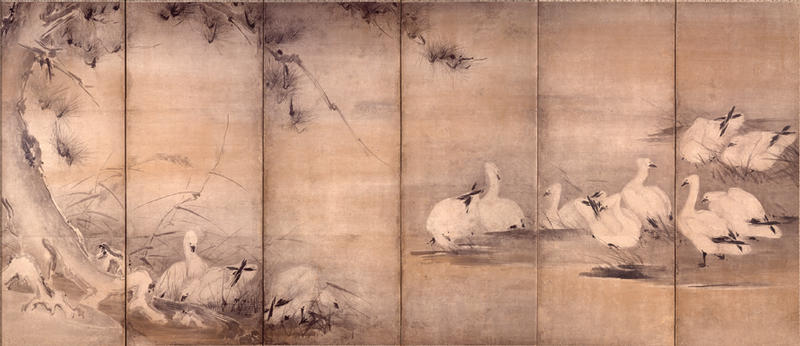
also his work (all three from Wikipedia)
http://upload.wikimedia.org/wikipedia/commons/d/de/Miyamoto_Musashi_RoGan-zu%28left%29.jpg
1) At Yagyu village
Musashi, in his younger days, has just started his long path to establish his Kenjutsu style and tried to meet famous established Samurai to receive any hints/suggestion to improve his skills. One day he visited Yagyu village in Nara prefecture, where a well-known Kenjutsu master YAGYU Sekishusai lived. Musashi intended to meet that old Sekishusai and receive a hint from him.
With staying at a small inn in the village, Musashi thought over how he could meet that well-known Kenjutsu master, YAGYU Sekishusai. Because this already retired old Samurai did not want to be disturbed his quiet time by meeting hundreds of visitors from all over Japan. At the same time, there are another visitors from Kyoto. They are the party from YOSHIOKA school in Kyoto, which was established by an famous Kenjutsu master named YOSHIOKA Kenpo. Since this founder, the name of YOSHIOKA family has become well-known all over Japan. And one of the family member, YOSHIOKA Denhichiro stayed in the village together with his students. He was waiting for a reply from Sekishusai for the meeting. Denhichiro was so confident that he could even defeat that Sekishusai and wrote him an impolite letter that he wants to make a match as a same skilled Samurai. Denhichiro was so sure that Sekishusai should meet him because such famous YOSHIOKA family member came to meet him from Kyoto.
A reply from Sekishusai was delivered to Denhichiro. It was just a twig of bloom and nothing more. So, Denhichiro convinced that Sekishusai avoided to meet him because he might worry to lose the match. Denhichiro declared his thought with full conviction then he and his followers left the village to go back to Kyoto. After they had left the inn, Musashi entered into their room so that he could watch the twig. He believed that the twig should carry certain message from Sekishusai. He gazed that twig and frightened when he found its small cut area. It was so sharp and should be cut by highest skilled person. Immediately he realized the astonishing high skill of Sekishusai.
Then he tried to cut twigs by himself if he could make such sharp cut area, either. He tried a hundred times but not once came out successfully. Then again he realized that he could be never compared with Sekishusai at that moment and could find his excellent future target. At least Musashi has become quite happy to get it.
2) At HOZOIN Yari DOJO in Nara
After defeating YOSHIOKA family completely in Kyoto through over three times fights, Musashi has become somehow famous in Kenjutsu. He was strolling around Japan to seek for a new strong opponent and has arrived HOZOIN Yari(spear) Dojo in Nara.
When he was walking through a narrow path in a huge territory of the HOZOIN temple to the Dojo which was located in the backyard of the temple, he saw an old monk plowing ground by a hoe in his way forward. At the moment he reached close to the monk Musashi felt strong attacking intention from the monk and immediately jumped away from him to avoid his potential attack. But nothing had happened. The monk just continued plowing the ground. Musashi walked on with strange feeling and tried to calm down his turbulent mind
At the DOJO, Mr. HOIN Kakushun, a head of the DOJO was absent and accordingly one of his superior student Agon was providing matches to the visitors. There are 10-15 visitors who wanted to make match but after seeing several visitors had become invalid or even killed by Agon’s strong and brutal spear attack, they all hesitated to make match and just kept sitting with faces down to avoid Agon’s eye. Then Musashi raised his hand to receive Agon’s proposal to fight with. At that time, through a small window of the Dojo, that monk was watching inside, and whispered
“ Agon’s has no chance with that young Samurai.”
The match ended very shortly. Musashi avoided Agon’s speedy stroke and the same moment his BO-KKEN (wooden Katana for training) hit Agon’s head and killed him in once.
After this match Musashi was invited to a visitor’s room of the temple by that monk. His name was Nikkan, a head of the neighbor temple of HOZOIN. Musashi talked what he experienced at the path with Nikkan. Nikkan told Musashi that he. as an amateur of Bujutsu, can never radiate attacking intention and that it should have been a reflection of Musashi’s attacking intention if Musashi felt it. By hearing Nikkan’s explanation, Musashi has got confused and tried to realized what he meant by his words.
This episode suggests several important points as followings.
a. Musashi had been paying sharp attention around him all the time even he was just walking.
b. Nikkan noticed or detected sharp intention radiated from Musashi and reflected it back against Musashi
c. Musashi was frightened by strong attacking intention, which, he though, was radiated by Nikkan
d. Both Musashi and Nikkan had keen awareness which indicates Awareness could be attained not only by Bujutsu training but also by the other training like Buddhism.
 Hozoin Ryu Yarijutsu
Hozoin Ryu Yarijutsu
Why Awareness is so important in Bujutsu?
After reading this article till here, most of the readers might basically understand what Awareness is. Then I would like to explain why it is regarded so important to attain Awareness in Bujutsu training.
It is most important in Bujutsu to win every match because one loss shall result in death most of the cases. Only few could reach the top who continued winning all the matches. It may sound same as today’s professional boxing. But the difference is the fact that just one loss results in death and there is no more return match in Bujutsu. That is why in Bujutsu one must win every time with full of attention and care. They must concentrate and utilize every possible means to win, i.e. to survive their lives. And Awareness should be an ultimate effort to survive. We could say that the strength of Awareness shall decide win or loss, i.e. life or death.
Now, let’s pick up interesting episodes from the Samurai books written by Mr, SHIBA Ryotaro, who is regarded as a top ranked historical story writer same as Mr. YOSHIKAWA Eiji.
1) YAGYU Munenori’s foul attack
In the époque of 3rd TOKUGAWA family’s Shogun Iemitsu, middle of 17th century, when YAGYU family has established its stable position as Shogun’s Kenjutsu teacher, a well-known high skilled Samurai wanted to make a match with YAGYU Munenori, a head of the family. Normally nobody can make a match with such top ranked Kenjutsu-ka as Munenori, but the Shogun Iemitsu himself wanted to see which could win, so he ordered Munenori to fight.
After receiving Shogun’s order Munenori studied very carefully about his opponent and found that the opponent was so skilled that even he might lose. Then Munenori specially requested Shogun Iemitsu if they could fight with real swards (SHIN-KEN) instead of BO-KKEN and the opponent accepted his offer. As a matter of fact physically the difference between SHIN-KEN and BO-KKEN was not such big. Even by BO-KKEN fight, most of the case BO-KKEN hits so hardly that almost all the cases looser becomes invalid or dead.
On the day when the fight was taken place, both competitors walked into the fighting ground from left and right sides to the front of Shogun Iemitsu. They stopped at the 2.5 meters distance from each others and turn to Shogun to bow. At the moment both bowed and turn up their back, Munenori so suddenly assaulted the opponent unawares by cutting his body from up right to down left. The opponent has died in once. Normally match should start after they bow to Shogun and face to each other then they hear the start shout by a selected attendance. So, the opponent did not expect this sudden attack by Munenori. When he was attacked he was not yet ready to start fighting.
Shogun Iemitsu was so shocked to see Munenori’s act and strongly blamed him why he behaved so unfairly. The Shogun even thought that he should punish Munenori by ordering HARA-KIRI (die by cutting own abdomen). Munenori answered to SHOGUN’s blaming as followings.
“The fight should have started since we both agreed to fight with SHIN-KEN. Because I am Kenjutsu teacher of Shogun, which means I should be superior to all other Kenjutsu-ka in Japan, I should not and could not lose. That is my strict duty so I tried all the possible means to win. It was quite natural behavior not to be blamed as BUJUTSU-ka. The opponent was to be blamed his unawareness not to be ready against my sudden attack. His mind was too dull as a Samurai. He lost the match because of his lack of Awareness.”
SHOGUN Iemitsu had to accept Munenori’s explanation because it was a logic, although he did not feel very happy with own retainer, Munenori’s win. But at least he did not make any punishment against Munenori.
In Bujutsu, Munenori’s behavior should not be blamed as an unfair act. As he explained, the serious fight had already started since both agreed to use SHIN-KEN. It meant a death fight, so they should and could utilize every possible means and materials to win. Not realizing such serious important fact, the opponent was so easy and though he could start fighting after hearing start shout. Such being the case, although Shogun Iemitsu felt unpleasant with Munenori’s behavior, he did not punish Munenori by ordering HARA-KIRI.
Now most of the reader surely got an doubt that Munenori’s behavior should violate fundamental Budo spirits as Reisetsu(politeness) and fairness. How and why it could be tolerated even it was a matter of Awareness. It is quite natural that such doubt arises. Before TOKUGAWA Shogun époque had started, war and fights were taken place everywhere in all over Japan. Samurai trained Bujtsu so hard to defeat the enemy and to survive. They could and should take every means to win. There were no Reisetsu nor fairness in their discipline. It was only one purpose to win. In Kenjutsu it actually happened a lot that a student with strong ambition attacked his teacher to take over the teacher’s famous name by defeating him.
When TOKUGAWA Shogun period had started, all the Samurai had to work as administrative officers with carrying their Katana which has become no practical usage at all. They had to keep wearing Katana as a symbol of Samurai, otherwise they will lose their identity as Samurai and accordingly lose their job. So far as they keep wearing Katana, they had to train it. Or because of the pride as being Samurai, they kept training of Kenjutsu.
We as a human beings need purpose when we had to do something, especially it take a lot of time and effort. We can never put our big energy for nothing. So Samurai tried to find a good reason/purpose to train Bujutsu and they had found that it is to cultivate their mind to become a respectable person, just like as religion training. In this way Bujutsu, as fighting system, has become Budo. In the beginning of TOKUGAWA Shogun period, this change was not yet completely done. Both Bujutus and Budo existed together. So, Shogun Iemitsu already had a mind of Budo, but he had to accept Munenori’s Bujutsu concept.
.jpg) Yagyu Shinkage Ryu
Yagyu Shinkage Ryu
To be continued to [Second Half]
 Text by Kurabe Makoto Shiseido
Text by Kurabe Makoto Shiseido
Born in 1950. When he was in his 30s, he began learning Gyakute-do Jujutsu, which was derived from Hakkoryu Jujutsu in the 1970s. Just before reaching the age of 40, he moved from Japan to The Netherlands and continued to master and develop Gyakute-do. In October of 2013, after adding the system of Aiki-Jutsu that he developed himself, he transformed Gyakute-do into Aiki-Jujutsu Gyakute-do, and became 2nd Soushi, grand master, of Gyakute-do. After retirement, he left The Netherlands and began promoting Aiki-Jujutsu Gyakute-do both in Japan and in Poland as his main pursuit. He is also teaching his Gyakute-do to Budo fan in the world via corresponding course.
You can read Original Japanese text here!
Awareness(察知能力)、武術で習得すべき最も重要なこと
A. Awarenessとは何か
時代劇小説や映画などでは、主人公が刺客の殺気を感じて、襲われる寸前で身をかわして攻撃をよける場面がしばしば登場します。「敵の殺気を感じ取る」この事自体は欧米の人たちにはなかなか理解できないコンセプトだと思います。そもそもまだ動き出していない相手の気持ち(殺意)を感じ取って、相手の執る次の行動を読み取るなどということは絶対に不可能だと、一般の欧米人は受け止めるからです。
日本人の場合は誰でもごく普通に、達人の領域に達した武芸者ならば殺気を感じ取るくらい至極当たり前のことと考えます。欧米人には絶対に無理と受け止められることが、日本人にはどうして当たり前と受留められるのでしょう。日本人は体験上それが可能であることを知っているのでしょうか。それとも全国民的にそうした幻想を抱いているのでしょうか。
武道ファンなら誰もが知っている日野晃先生と言う武道の達人がいますが、彼が小銃を構えた相手の前に立ち、思い通りのタイミングで引き金を引かせて、それを避ける様子をビデオで見たことがあります。勿論弾は込められていないので実弾は発射されませんが、引き金を引いたときの音とそのときの日野先生の動き(位置)で、本当だったら弾が当っているか、完全に避けきれたかが判定できるというものでした。驚くべきことに日野先生は毎回確実に弾を避け切っているのです。日野先生が体を移動させるより、攻撃者がトリガーを引く人差し指の動きのほうが遥かに早いはずなので、日野先生は攻撃者の意図を、引き金を引くという動作が起こる前に察して動いているはずなのです。そうでなければ引き金が引かれるより早くに、体を弾が当らない位置へ移動させることなど絶対に不可能です。日野先生は武術修練の結果、相手の目は勿論、体全体に微妙に顕われる変化を察して相手の心の動きを読み取れるまでになったに違いありません。これは正しく武術修練で身につけたAwarenessに他なりません。 此処まででしたら欧米の人たちも何とか理解できるかもしれません。しかし、見えない背後からの襲撃者の気配まで察するとなると、理解するのは困難でしょう。背後から聞こえてくる音、周囲からのざわめきの微妙ではあるが突然の変化など、目に見える範囲だけでなく、背後までも含む自身の周囲に生じる僅かの変化を察することが出来るように常に気を配っていればこそ出来る業なのです。つまり潜水艦に装備されたソナーのごとく周囲に気配を張り巡らし続ける能力、それが武術におけるAwarenessの一つです。
もう一つのAwarenessは文字通り“気付く“事です。つまり普通の人ならば察することが出来ないようなことから、何か重要なことに気付く能力を言います。この場合気付く対象は殺気に限らず色々な事象を指します。
ではこの2つのAwarenessを小説に描かれた例で説明しましょう。
B. 宮本武蔵に見るAwareness
武士の生き様を描いた数ある歴史小説の中でベストを挙げるとすれば、誰もが文豪吉川英二が描いた「宮本武蔵」を真っ先に思い浮かべることでしょう。それほどにこの作品は日本中で時代を超えて愛読されています。戦国時代から徳川初期に掛けて実存したこの武芸者は、この作品によって日本中に人にその名前を知られるようになりました。また極真空手を起こした大山倍達先生のように、この本に描かれた宮元武蔵の行き方を人生での苦難を乗り越える心の支えとした人も数え切れない位いるはずです。武術を通して武士の生き様を知ろうとしたら、まず読むべき本の筆頭に挙げられる作品であると信じます。
この本の面白さを語るのはこのエッセイの目的ではなく、此処では小説「宮本武蔵」で描かれるAwarenessについて説明します。それらのエピソードはまさにAwarenessを理解する上で最適の教材となるからです。
その1.柳生の里にて
修行中の武蔵は、今の奈良県に在る柳生の里に住む高名な武術・兵法家である柳生石舟斎に一手教えを請おうとして、柳生一族の領地「柳生の里」を訪れます。その地の旅館に逗留して、武蔵はどうやったら石舟斎に会ってもらえるか策を練ります。当時柳生石舟斎は既に隠居をしていて、全国から彼を訪ねてくる武芸者たちからの面会希望を、石舟斎は隠居を理由に断り続けていたからです。武蔵が逗留した旅館には、京で将軍家剣術指南役としてその名を日本中にとどろかせた吉岡憲法が起こした吉岡道場一門の吉岡伝七郎が弟子たちとともに宿泊していました。彼の目的も、隠居したとはいえ未だに不世出の剣術家として高名な柳生石舟斎に会ってその腕を確かめたいということでした。彼は自分の腕に自惚れて、決して柳生石舟斎のほうが自分よりも遥かに優れているなどとは夢にも思っていませんでした。「京の吉岡道場と名乗れば必ず会う」と信じて手紙を出したところ、花をつけた小枝一つがその返事として吉岡伝七郎へ送り届けられてきました。彼はその枝を見て「年寄り、俺と立ち会うのを臆したか」と言って門人たちを一緒に石舟斎の臆病さを笑い、柳生の里を後にして京へと戻ります。その様子を奥で耳を澄まして聞いていた武蔵は、彼らが去った後で彼らの部屋へ入ります。武蔵は部屋の片隅に残された枝を手に取り、石舟斎が返事として遣したその枝に“記された”メッセージを読み取ろうとしました。
枝の切り口をみた武蔵は、そのあまりにも見事に切られた断面に驚きます。よほどの名人でもなければそのように見事に断ち切れるわけがないのです。それを切り下ろした石舟斎の素晴らしいレベルが分かり、武蔵は感動に震えます。直ちに旅館の番頭に言いつけて沢山の枝を用意させた武蔵は、自分で枝を次々と切りますが、どれも石舟斎の切り落とした断面には到底及びません。自分の未熟さを武蔵は痛切に感じるのでした。
その2.奈良、宝蔵院流槍術道場にて
その後京都で3度に亘る決闘で前述の吉岡一門を完膚なきまでに打ち破った武蔵は、更なる強敵との出会いを目指して奈良にある槍術で有名な宝蔵院を訪れます。
宝蔵院にある道場へ行くために寺の中の敷地を歩いていた武蔵は、道の行く先に小さな畑を一人の寺僧が鍬で土を耕しているのを見つけます。武蔵が何気なく近づいていき、丁度その脇を通り過ぎようとした時、その僧から発せられる強烈な殺気感じた武蔵は、飛び上がって鍬が届く距離から逃れました。僧は何もなかったかのように鍬を下ろしてもくもくと畑を耕し続けていましたが、武蔵はそこを通り過ぎた後も冷や汗が止まらず、心がなかなか静まりませんでした。
道場では宝蔵院主の覚禅坊法印 胤舜が不在で、武蔵はその高弟である阿巌と試合をしますが、道場の窓から中の様子をのぞいていたその僧は、試合が始まる前から阿巌が武蔵には到底及ばないことを察します。試合は僧が予測したとおり武蔵の勝ちで、阿巌は武蔵の木剣で叩かれて絶命してしまいました。僧は宝蔵院の隣にある寺、奥蔵院の住職、日観和尚で、試合の後で武蔵はこの日観に呼ばれて奥蔵院で話をします。武蔵が先ほど日観から凄まじいばかりの殺気を感じ、思わず飛び上って離れたことを述べると、日観は
「何一つ武術の心得など無い自分がそのような殺気など発せられるわけが無い。それはお手前が自分で発した殺気に自分で気がついて飛び上がったのだ」
と答え、それを聞いた武蔵はじっと考え込んでしまうのでした。
これは幾つもの興味深いことを示唆します。
1)武蔵は油断することなく周囲に気配を配っていた。
2)武蔵から発せられる気配(殺気とは異なります)に日観は気がつき、自身を鏡のよう
にして、それを武蔵に返した。
3)武蔵は日観から返された自分の気配を、日観から発せられた凄まじいばかりの殺気と感じて、飛びのいた。
4)つまり両人共に鋭いAwarenessの持ち主であったわけで、Awarenessは武術修行だけから得られる訳ではないことがこれで分かります。
C. 何故武術でAwarenessが重要となるのか
これまで述べてきたことを読んでいただければAwarenessがどういうものなのか漠然と理解していただけたことと思います。この章ではそのAwarenessがなぜ武術を修行する上で重要となるのかをお話いたします。
武術で一番大切なことは生死を掛けた勝負で勝って生き残り、勝つたびに自分の技量を高めてついには日本一まで上り詰めることです。つまりボクシングで世界チャンピオンを目指すのと同じです。唯異なっているのは、武術では一回でも負けたらそれは殆どの場合死もしくは不具になることを意味し、そのあとが無いことです。ですから武術では一回たりとも負ける事は出来ず、毎回確実に勝ち残れる様にありとあらゆる努力をし尽くすことが必須となります。その窮境の努力がAwarenessを働かせることに他なりません。武術の試合はAwarenessの有無、更には強弱で勝負が決まるといっても過言ではありません。
ではそうした例を、文豪吉川英二と並んで歴史小説の第一人者と知られる司馬良太郎の作品の中から選んでこの事を説明していきましょう。
その1 柳生宗徳の騙まし討ち
柳生家の徳川将軍家指南役としての地位が固まった三代家光の時代に、世間で高名を得た武芸者が柳生宗徳との試合を希望しました。普通でしたら将軍指南役ともなった柳生宗徳は他流試合などしませんが、この場合は将軍自らが果たしてどちらが強いかを確かめたかったこともあって、特別に御前試合が設けられることになりました。
試合の前に十分な調査を行った宗徳は、相手が尋常なレベルでないことを知りました。良くて引き分け、下手をすると負けてしまうかもしれません。宗徳は特に将軍家に請うて木剣ではなく真剣での試合を所望し、相手もそれに同意して試合は真剣で行われることになりました。当時の試合ではたとえ木剣といえども、見事に一本取られれば場所が頭なら即死、胴体でも骨がばらばらとなって一生不具者となるしかありませんでしたから、木剣が真剣となってもその危険はさほどの違いは無かったと言えます。
当日の試合場、左右から分かれて将軍の前に現れた二人はまず将軍家に向かって深々と礼をしました。二人が頭を上げるかあげないかの瞬間、宗徳は刀をすばやく抜き払って隣に立っていた試合相手を袈裟懸けに深々と切り下げて一刀の元に切り殺しました。
この宗徳の突然の諸行に驚いた将軍家は言葉鋭く宗徳を詰問します。理由次第では卑劣な行いを咎めて切腹を申し付けるつもりでした。
それに対して宗徳はこう答えました。
「真剣での試合をすると決めた以上、その時から勝負は始まっております。私は将軍家剣術指南役という職席上、いかなる相手にも不覚を取ることは許されません。私が負ければ、将軍家は最上の指南役を持っていなかったことを天下に公表し、面目を失うことになるからです。従って、私は絶対に負けないように努めたのです。試合場に出てもなお、油断して私の不意打ちに切られるようでは、武士としての覚悟不足として責められるべきです。今回の勝負は当然の帰結です。」
この答えを聞いて、納得は出来ず不愉快な思いは消えなかったものの、家光は宗徳の処分だけは思いとどまりました。
宗徳が試合を木剣から真剣に替えたいと申し入れてきて、それを承諾した際に相手は事の重大さに気がつくべきでした。 その時から既に生死を掛けた勝負は始まっていたのです。不意打ちも含めてあらゆる仕掛けが起こりうるというヒントを宗徳はそれで相手に与えていました。ですからそれに気がつかず、試合は試合場で向き合って始めの号令が掛かってから始まるものとノホホンと構えていた相手に重大な落ち度があったのです。将軍は宗徳の釈明を聞いてそれが理解できたから、不愉快な気持ちは残ったものの宗徳の不意打ちをそれ以上咎め立てしなかったのです。
此処で読者の皆さんは大きな疑問を抱くはずです。武道は礼節と公正を目指すものであるはずなのに、何ゆえ宗徳の卑怯なだまし討ちが許されるのかと、彼の態度は武道精神に反するのではと。
その疑問は尤もです。徳川将軍時代が始まるまでの日本は戦争に明け暮れ、武士は相手を倒して勝ち残るために必死で技を鍛錬していました。そこには礼節も公正も無く、目的は唯一つ、いかなる手段を弄しても相手に勝って生き残ることでした。剣の世界でも弟子が名前を売り出すためにその師匠を不意打ちで襲って撃ち殺す事さえあったのです。
徳川将軍時代となって戦争が無くなり刀をさした公務員として勤め始めた武士たちは、刀は不要と言って捨てれば武士を辞めることになり、それは公務員である職を失うことになるので使わない刀でもさし続けていました。そしてそれを使う技を鍛錬し続けなければなりませんでした。あるいはたとえ使わなくとも武士であることの誇りから、剣術を鍛錬しました。人間は無意味なことをやり続けることは出来ません。何かを真剣にし続けるには自身を納得させるだけの意味が必要です。 そうして武士たちは、決して使われることの無い武術を鍛錬し続ける意義を、単に相手を倒すためではなく自身の人間としての修養の道として見出したのでした。人間としての修養の道である以上、礼節や公正を重んじ、生きる美学を追い求めるようになりました。その段階で武術は武道に昇華したのです。宗徳が生きた徳川将軍時代の初めは丁度その過渡期で、どんな手段を使っても相手に勝つための武術と礼節を重んじる武道が並列で存在していたのです。(続く)
合気柔術逆手道宗師
倉部 至誠堂
At the starting of AIKI Web Course
Cooperating with BAB Japan Co., Ltd., hereby I start AIKI Web Course in order to realize my long-standing desire to let as many as martial arts fans all over the world have the correct knowledge of AIKI and learn how to practice AIKI.
This course consists of
Part 1 as introductory articles, I explain a wide range of knowledge about what AIKI is, which contains 6 lessons.
Part 2 as main articles, for beginners/intermediate level, I explain how to practice AIKI to master. It contains 24 lessons.
The each lessons will be uploaded on BudoJapan website one by one every week.
I hope as many people as possible will be interested in AIKI and become able to practice it by following this course.
AIKI Web Course 25 Lessons
-
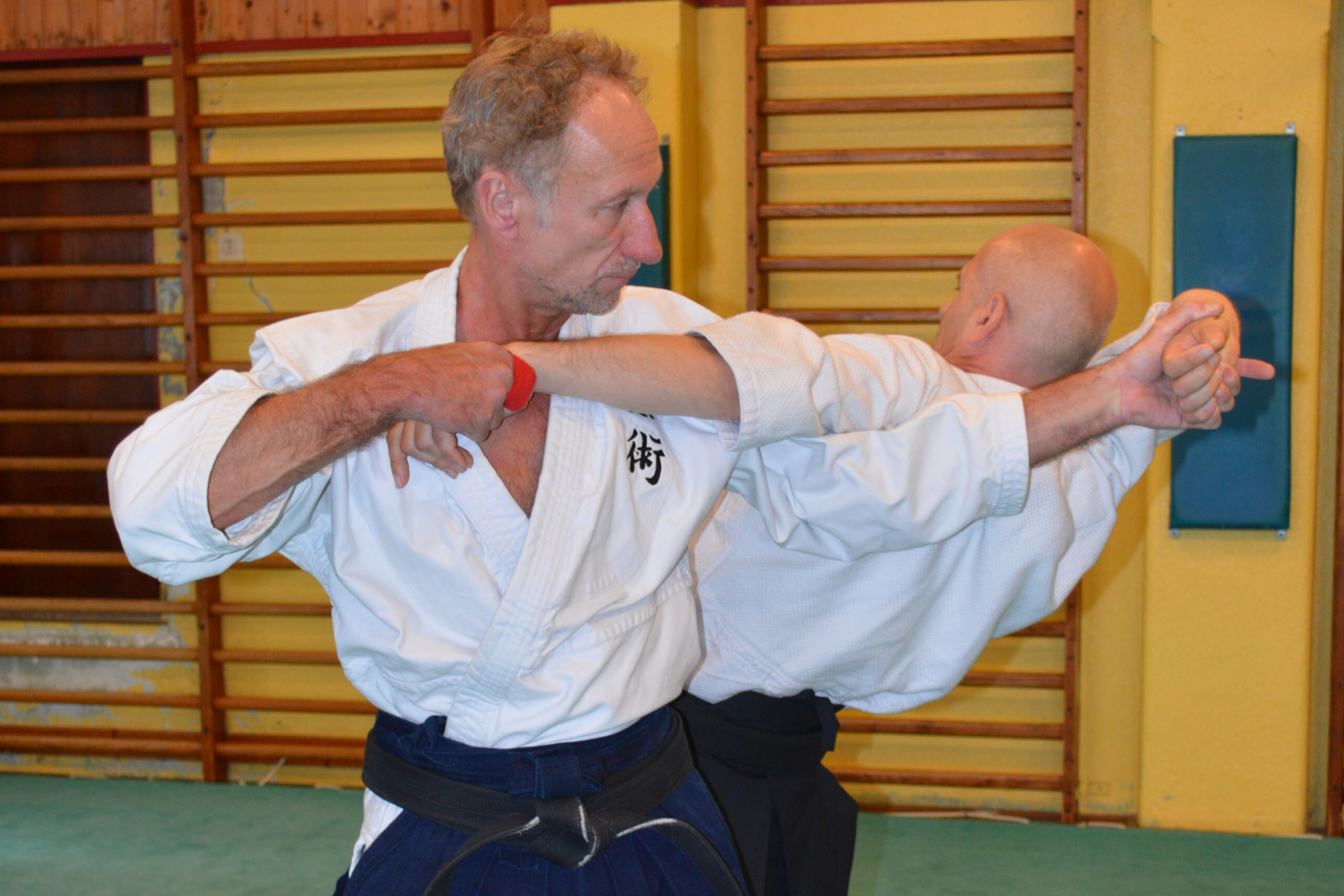
【AIKI JUJUTSU GYAKUTE-DO Series No.5】How you can learn Jujutsu properly
-
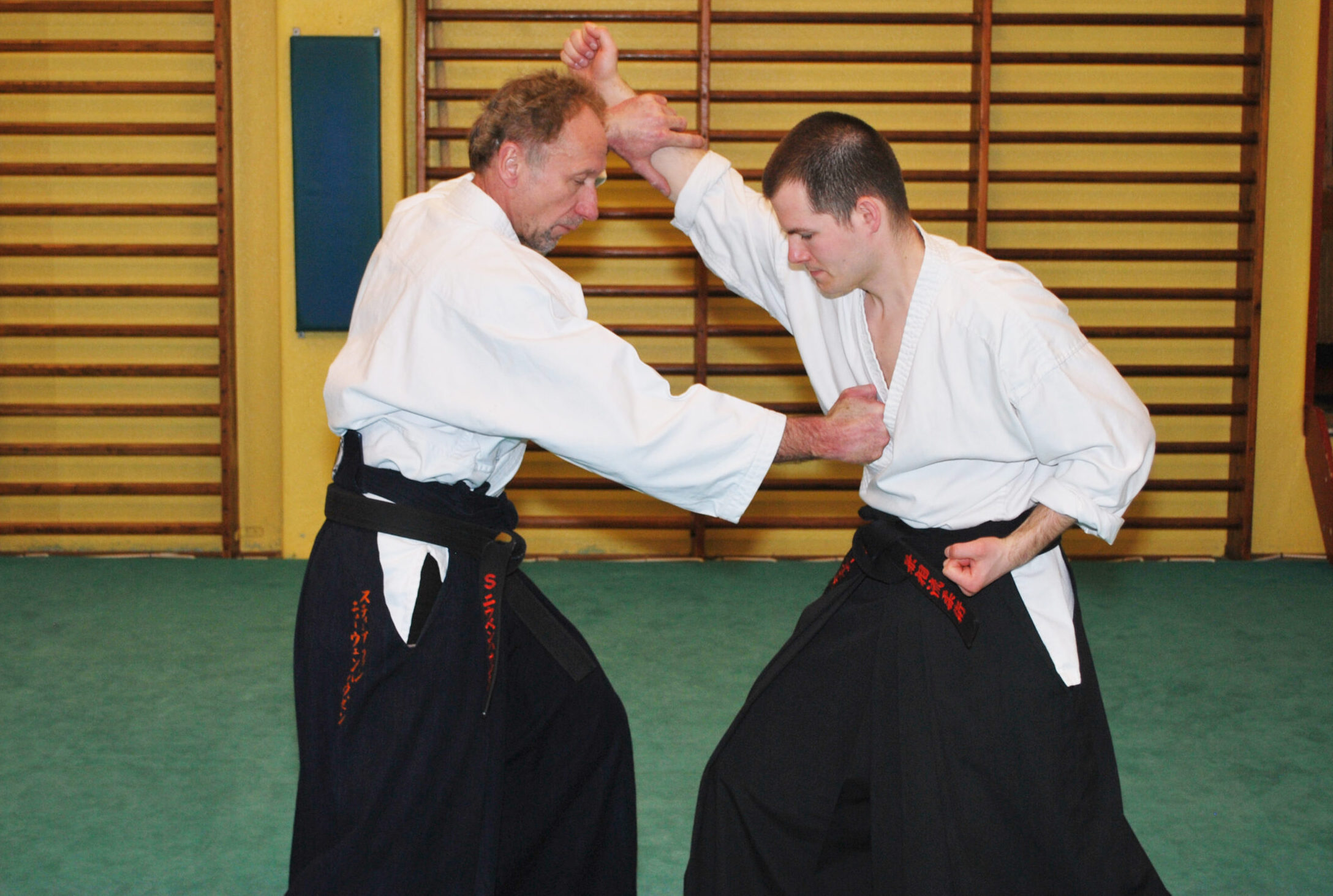
【AIKI JUJUTSU GYAKUTE-DO Series No.4】DAKEN-HO Hit and Kick KATA and AIKI
-
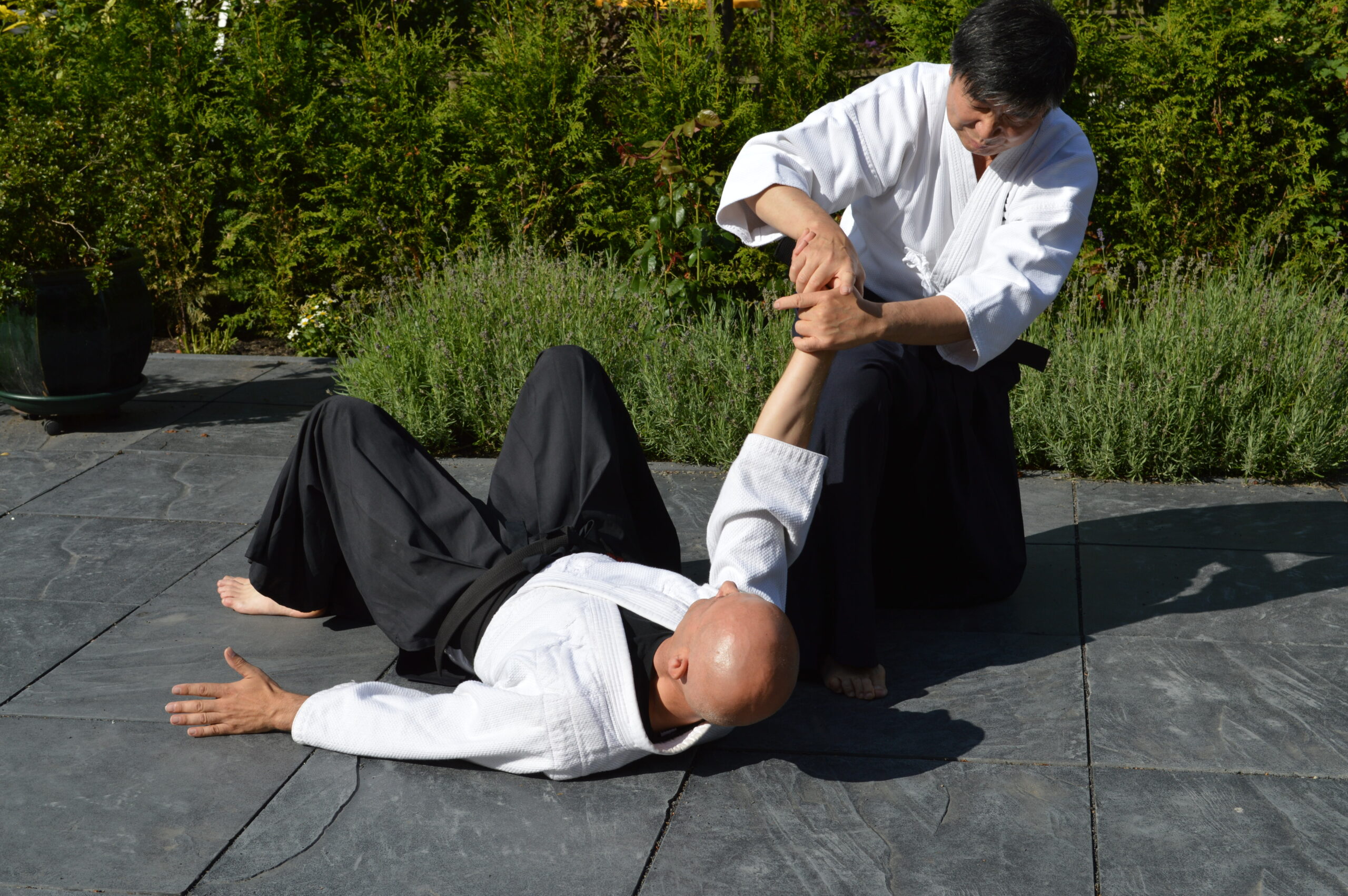
【AIKI JUJUTSU GYAKUTE-DO Series No.3】JUJUTSU WAZA, digest of FUDO
-
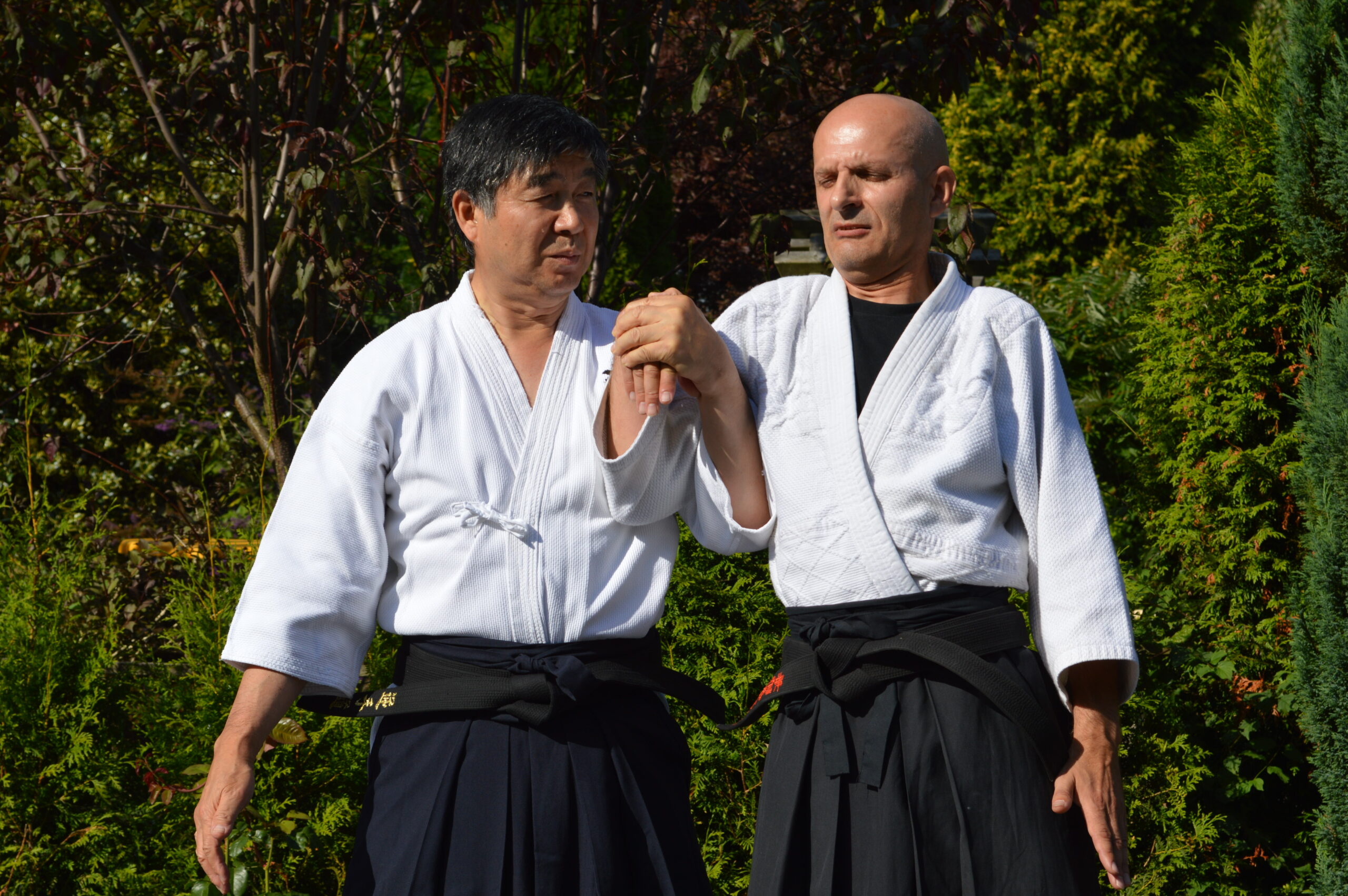
【AIKI JUJUTSU GYAKUTE-DO Series No.2】JUJUTSU WAZA, digest of NUKI, RENKO and NAGE
-

【AIKI JUJUTSU GYAKUTE-DO Series No.1】About GYAKUTE-DO and the digest of its basic techniques
-
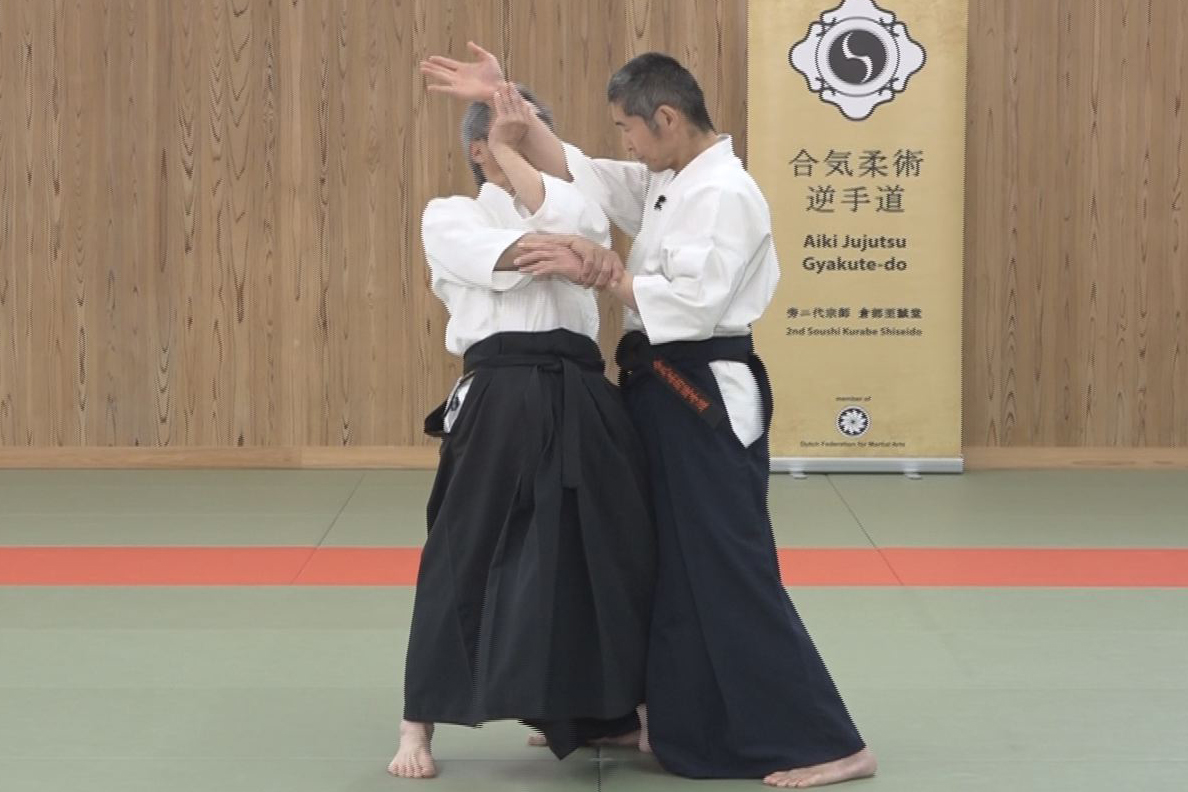
【AIKI Web Course Part 2】Lesson 24 With Comb. of Different Methods #2
-
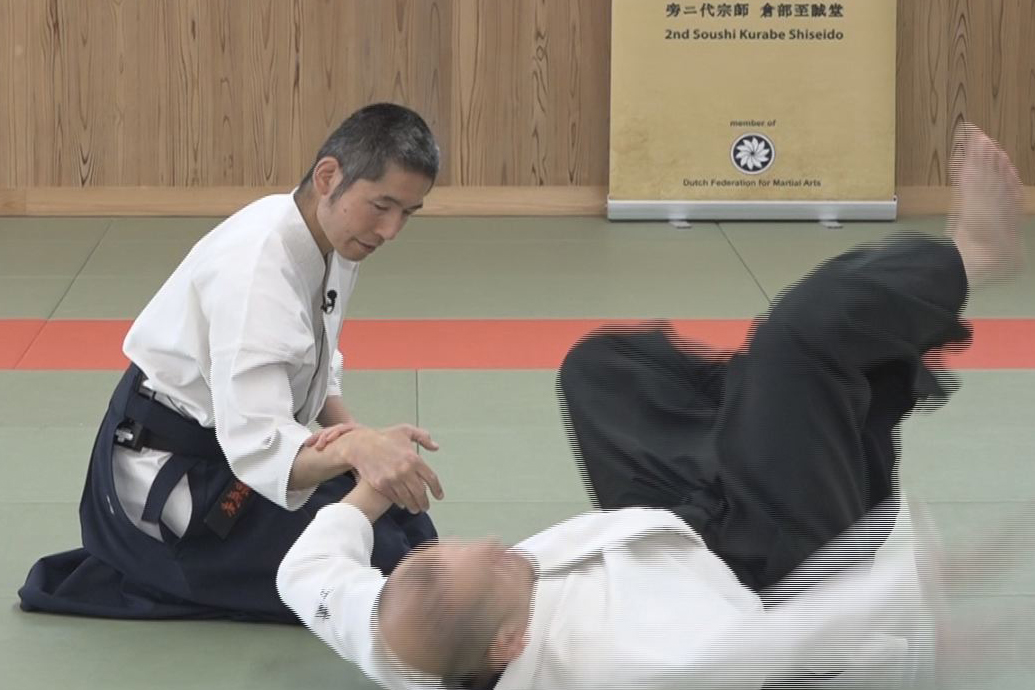
【AIKI Web Course Part 2】Lesson 23 With Comb. of Different Methods #1
-

【AIKI Web Course Part 2】Lesson 22 Advanced Tech. using F. E. method #2
-

【AIKI Web Course Part 2】Lesson 21 Advanced Tech. using F. E. method #1
-

【AIKI Web Course Part 2】Lesson 20 Advanced tech. using T. F. T. #2
-
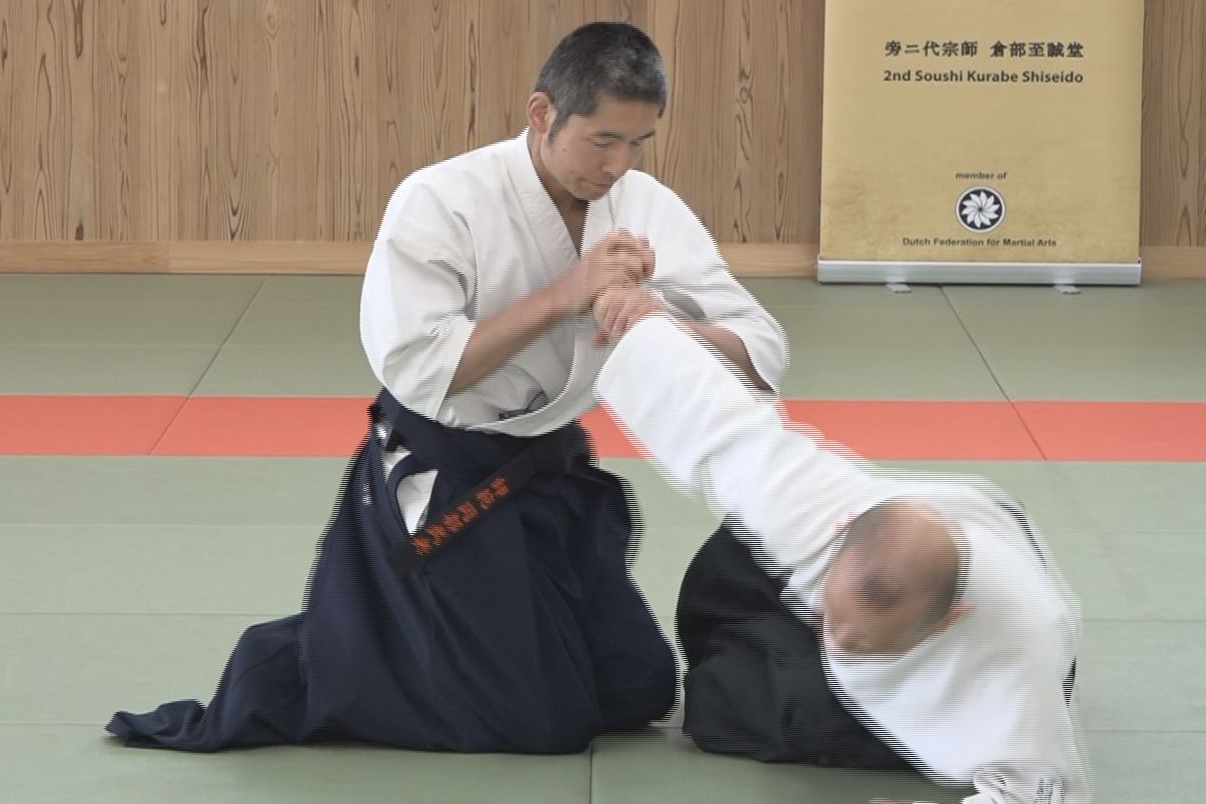
【AIKI Web Course Part 2】Lesson 19 Advanced tech. using T. F. T. #1
-
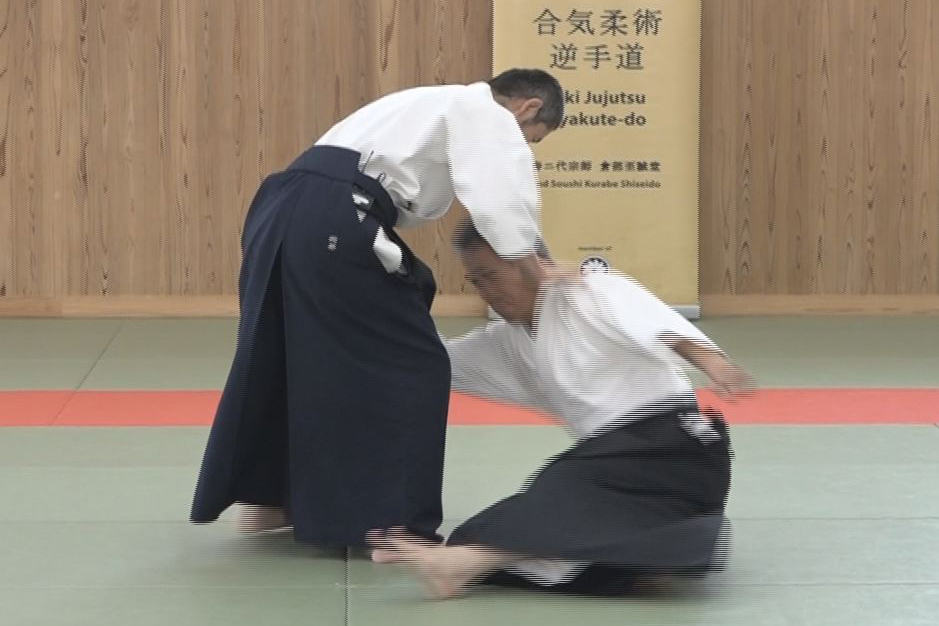
【AIKI Web Course Part 2】Lesson 18 Advanced tech. using AIKI Contact #2
-
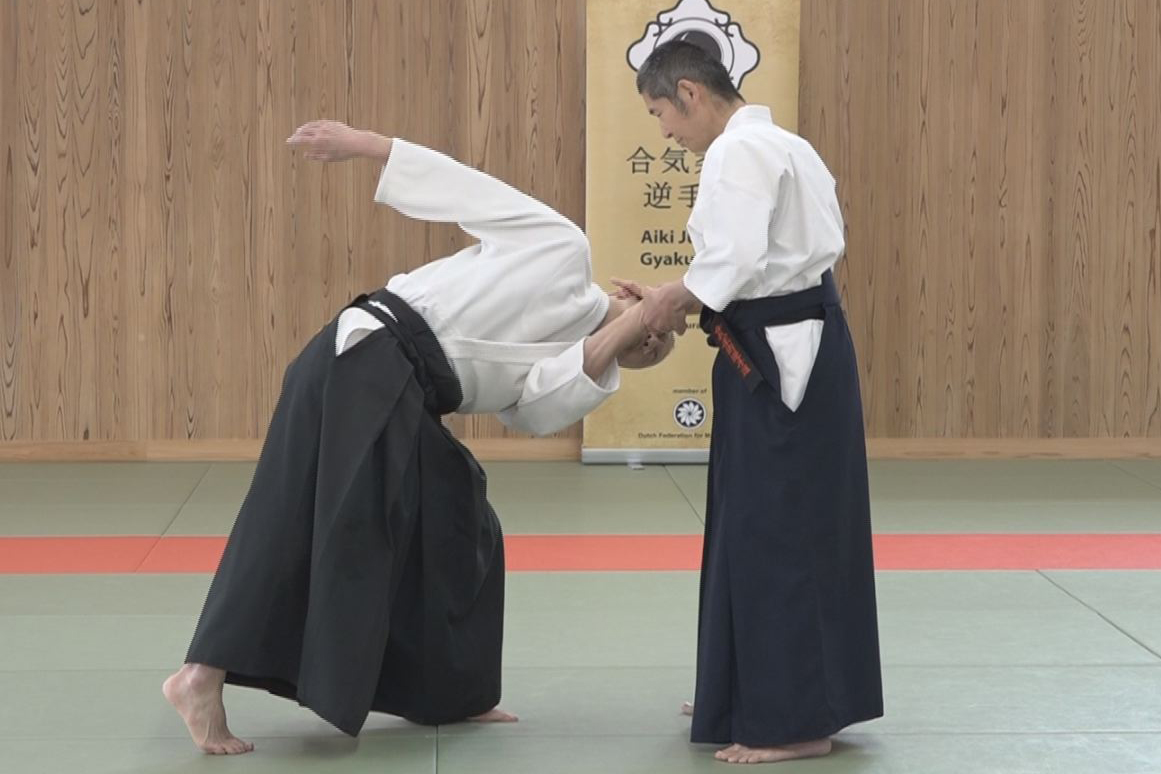
【AIKI Web Course Part 2】Lesson 17 Advanced tech. using AIKI Contact #1
-
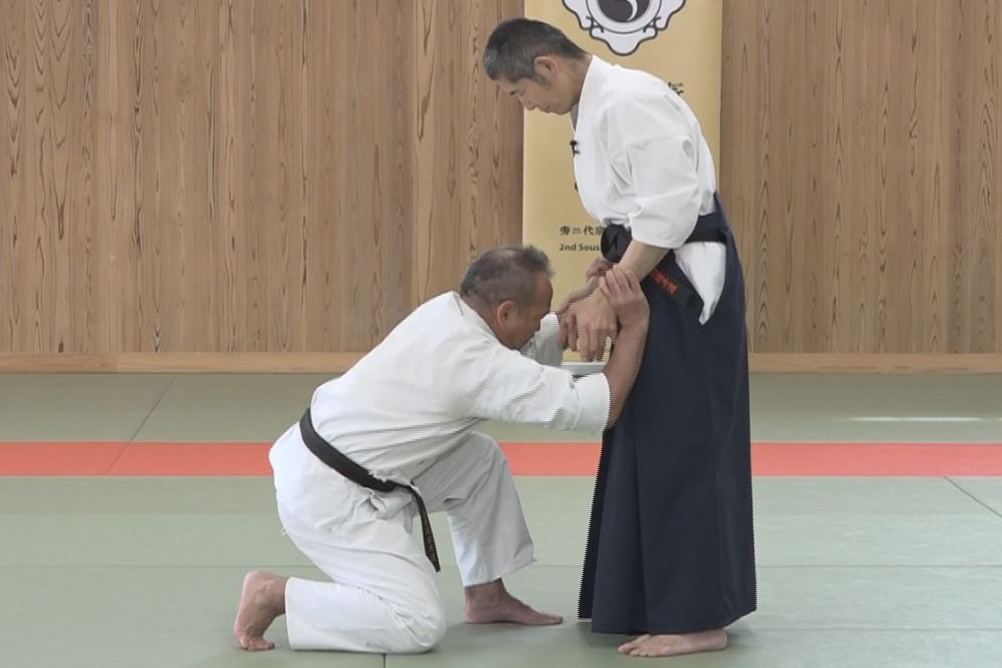
【AIKI Web Course Part 2】Lesson 16 Advanced tech. by Undetectable F.T. #2
-
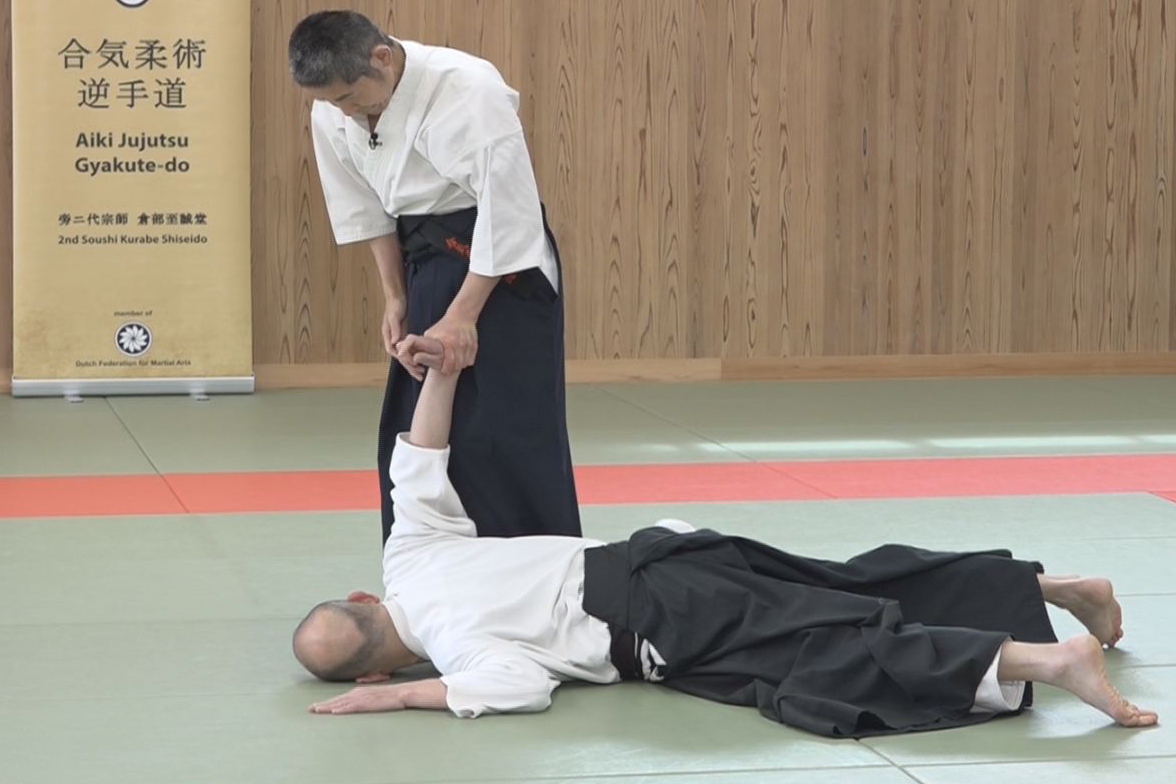
【AIKI Web Course Part 2】Lesson 15 – Advanced tech. by Undetectable F. T. #1
-

【AIKI Web Course Part 2】Lesson 14 – Advanced tech. by the Waving method #2
-
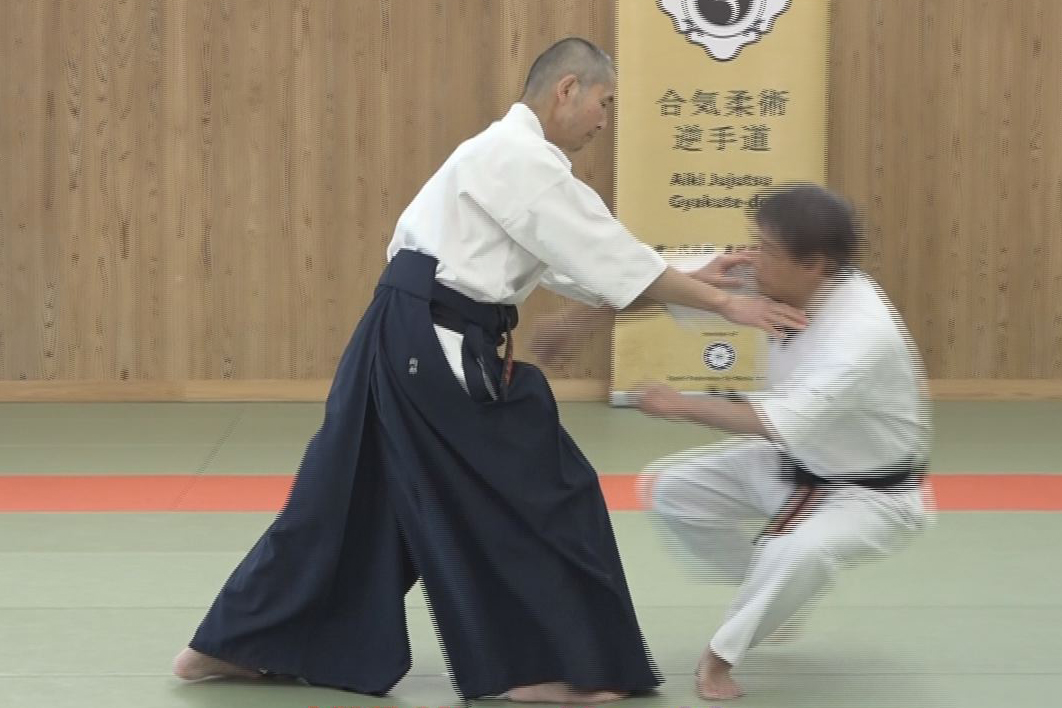
【AIKI Web Course Part 2】Lesson 13 – Advanced tech. by the Waving method #1
-
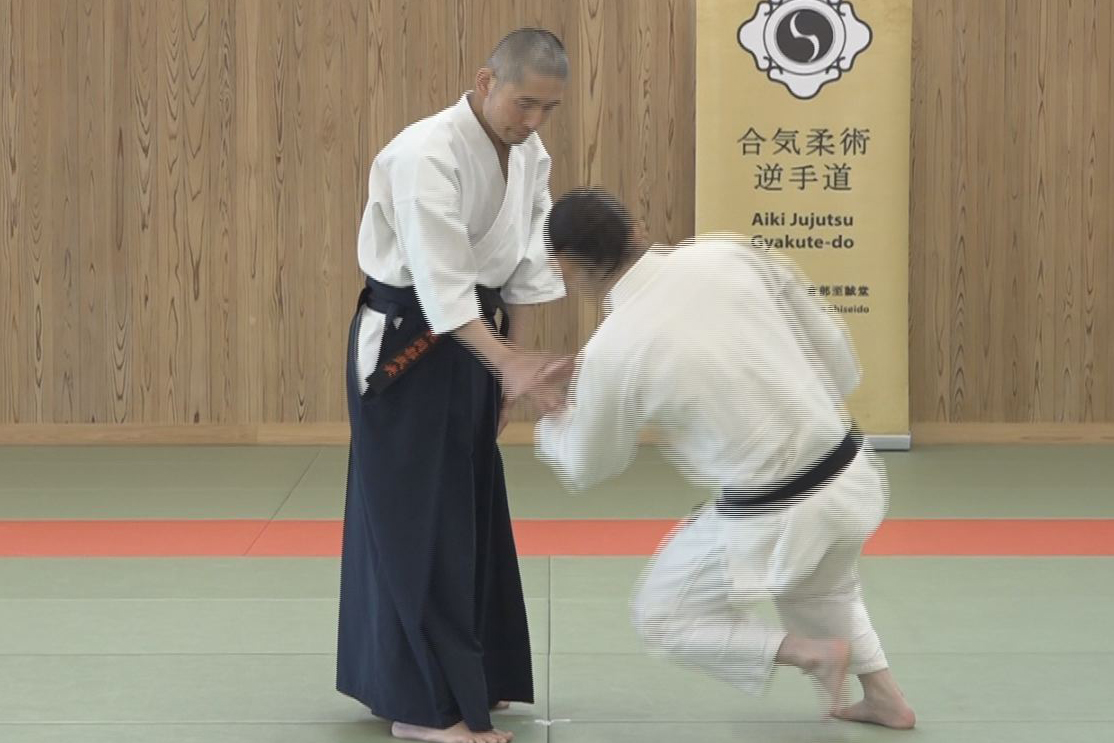
【AIKI Web Course Part 2】Lesson 12 – Gyaku-te by not Using Force nor AIKI
-
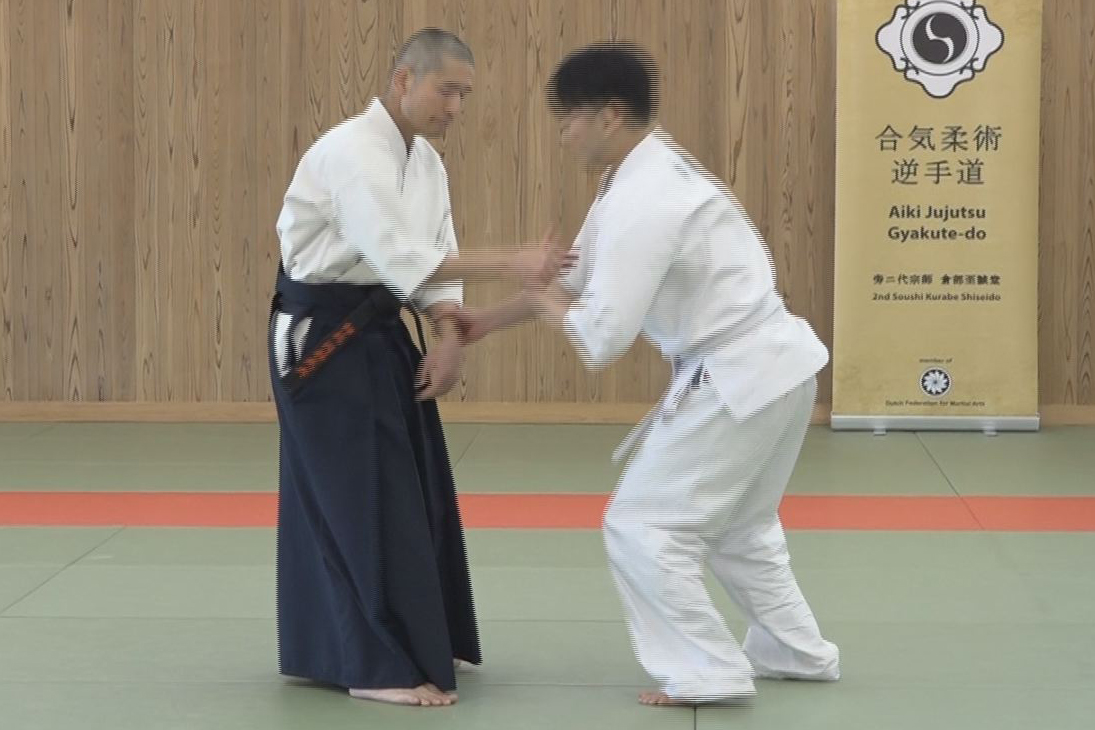
【AIKI Web Course Part 2】Lesson 11 – Gyaku-te Realized by the AIKI Method
-
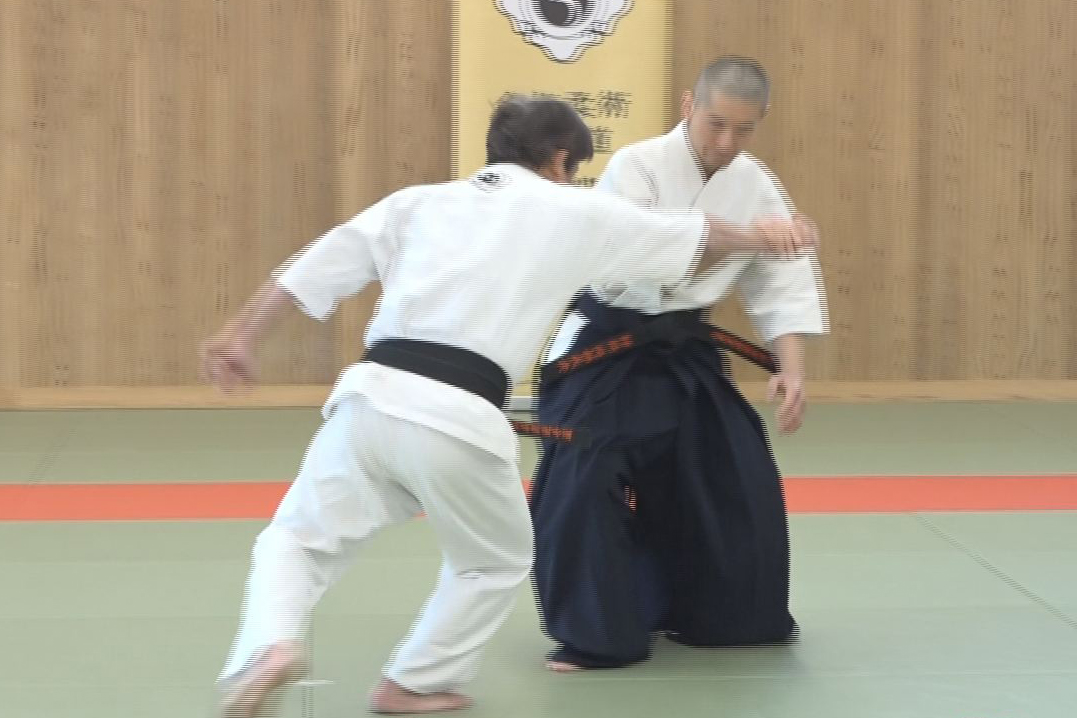
【AIKI Web Course Part 2】Lesson 10 – Application of Force Equilibrium method
-
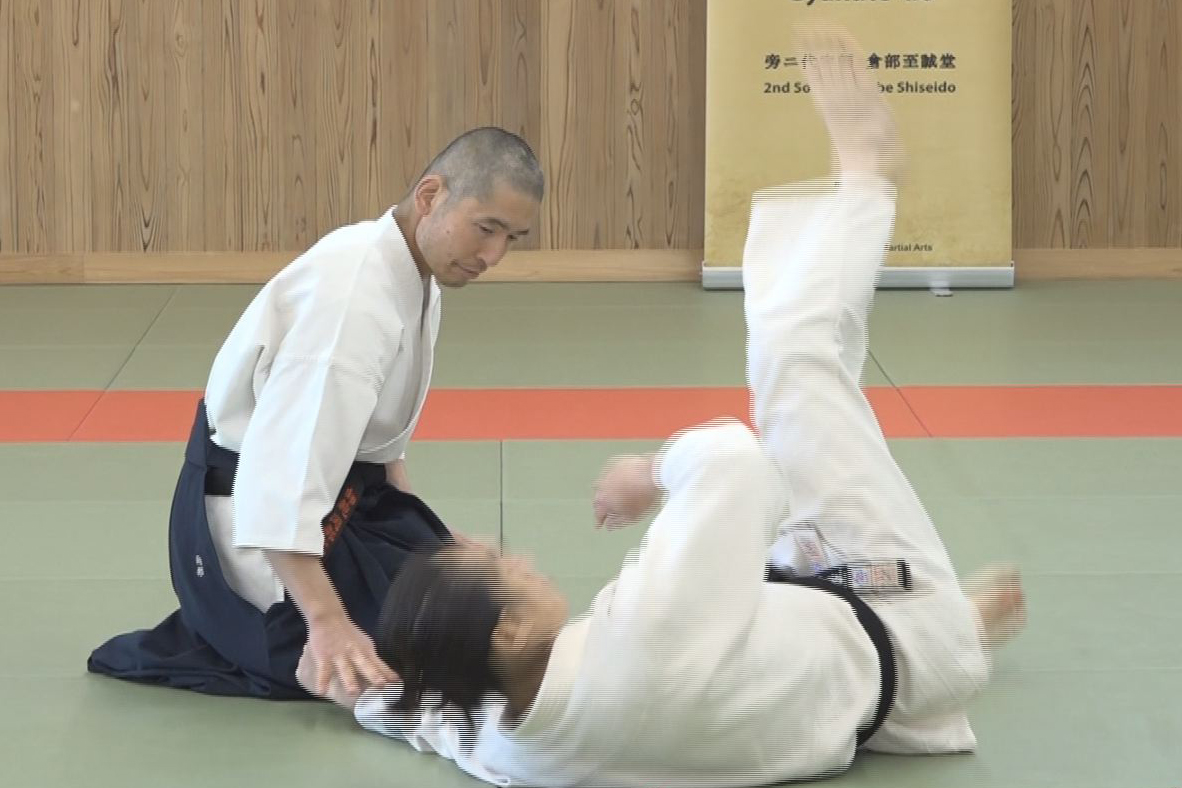
【AIKI Web Course Part 2】Lesson 9 – Force Equilibrium
-
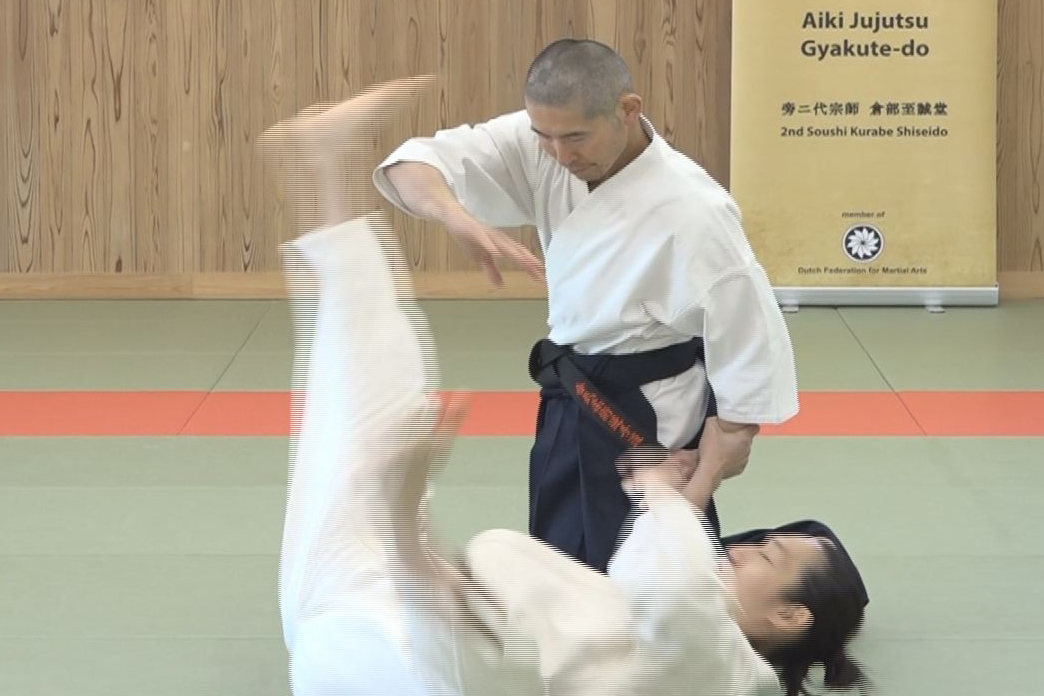
【AIKI Web Course Part 2】Lesson 8 – Application of Targeted Force Transfer
-
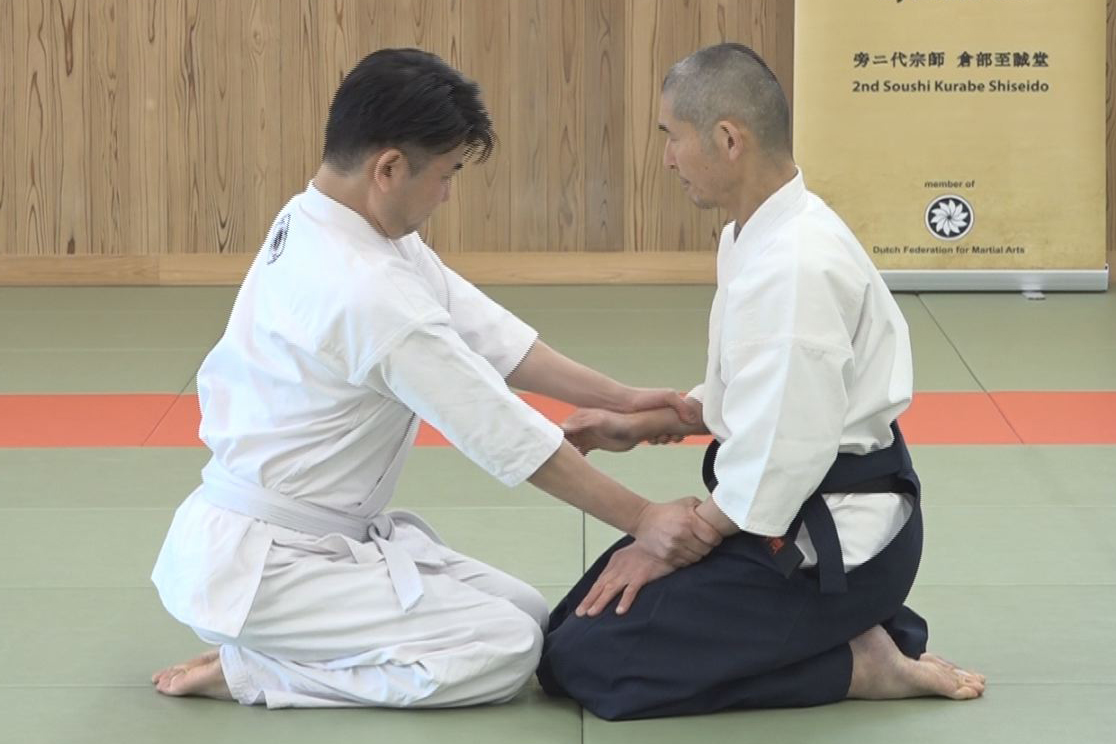
【AIKI Web Course Part 2】Lesson 7 – Targeted Force Transfer
-

【AIKI Web Course Part 2】Lesson 6 – Application of AIKI Connection
-
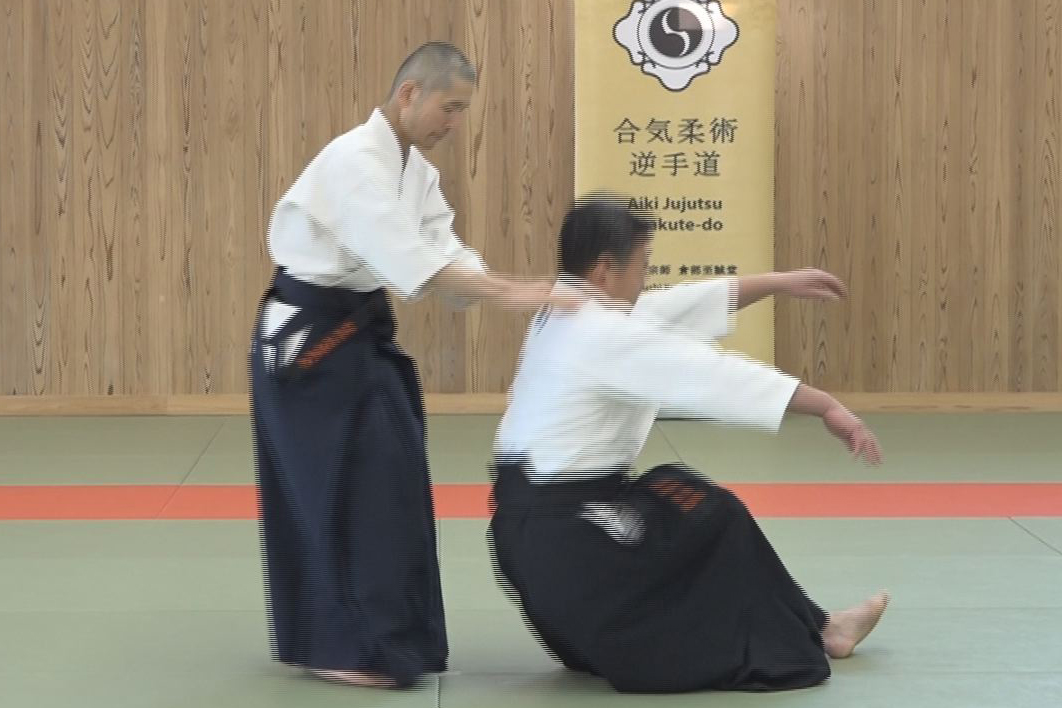
【AIKI Web Course Part 2】Lesson 5 – AIKI Connection
-

【AIKI Web Course Part 2】Lesson 4 – Application of Nondetectable Force Transfer
-
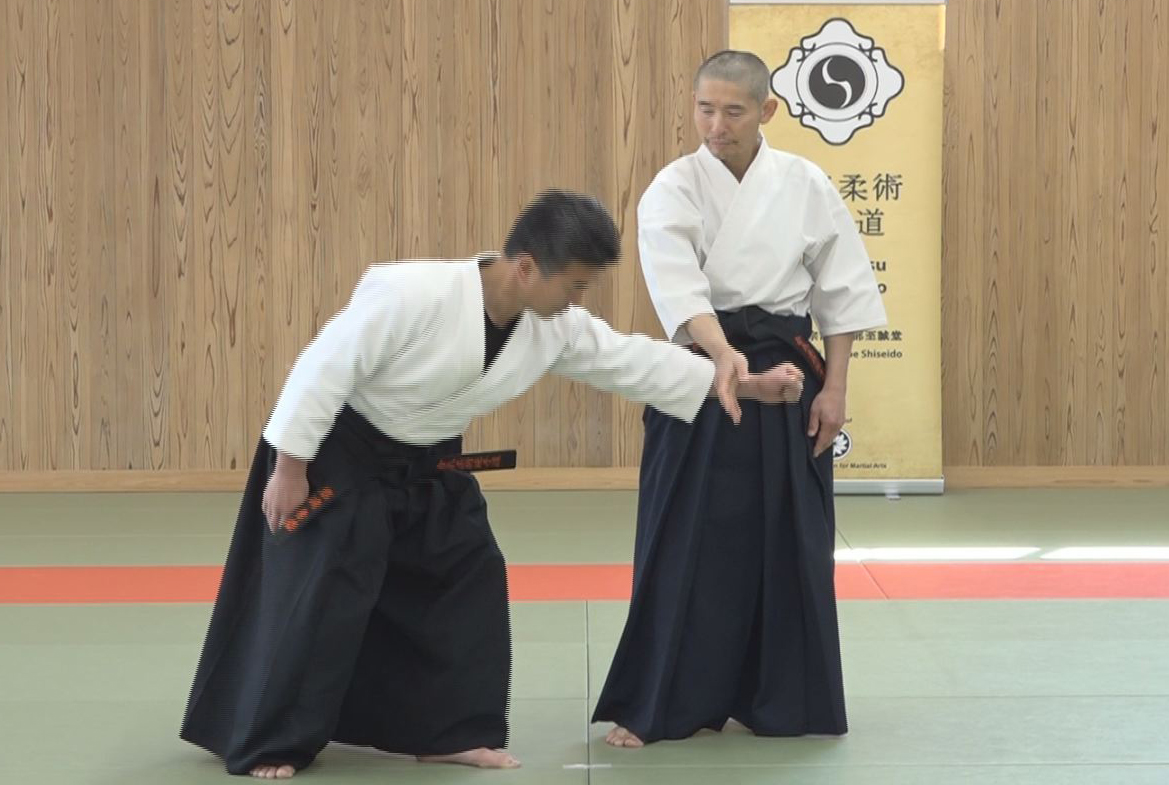
【AIKI Web Course Part 2】Lesson 3 – Explanation of Undetectable Force Transfer
-
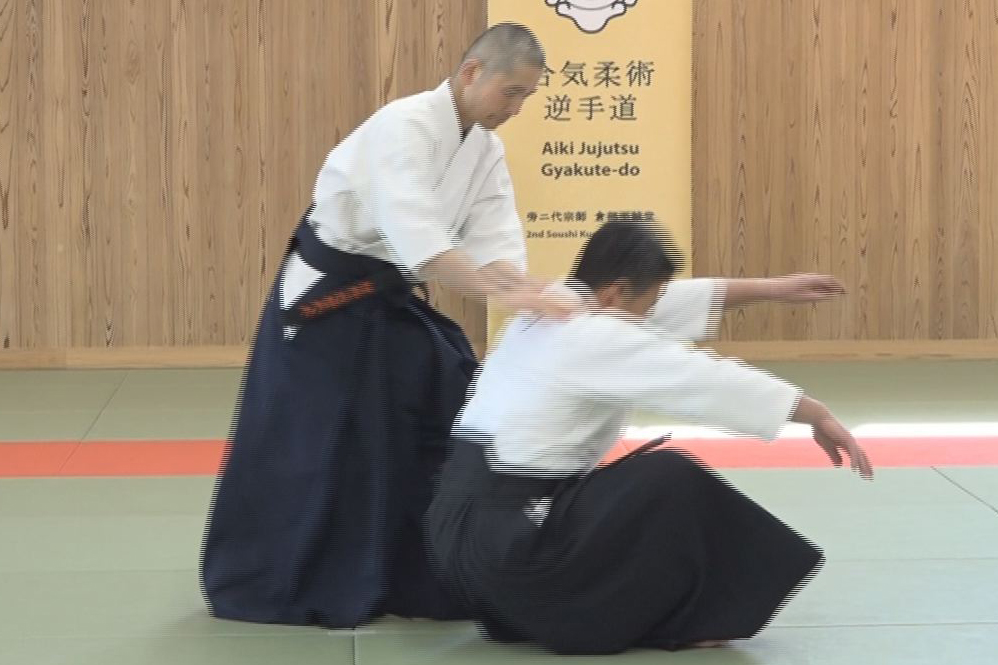
【AIKI Web Course Part 2】Lesson 2 – Application of Waving Method
-

【AIKI Web Course Part 2】Lesson 1 – The Explanation of Waving Method
-
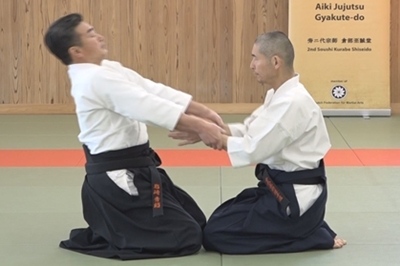
【AIKI Web Course Part 2】Introduction with video


